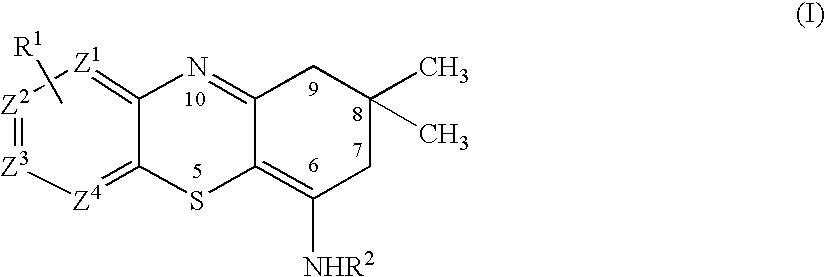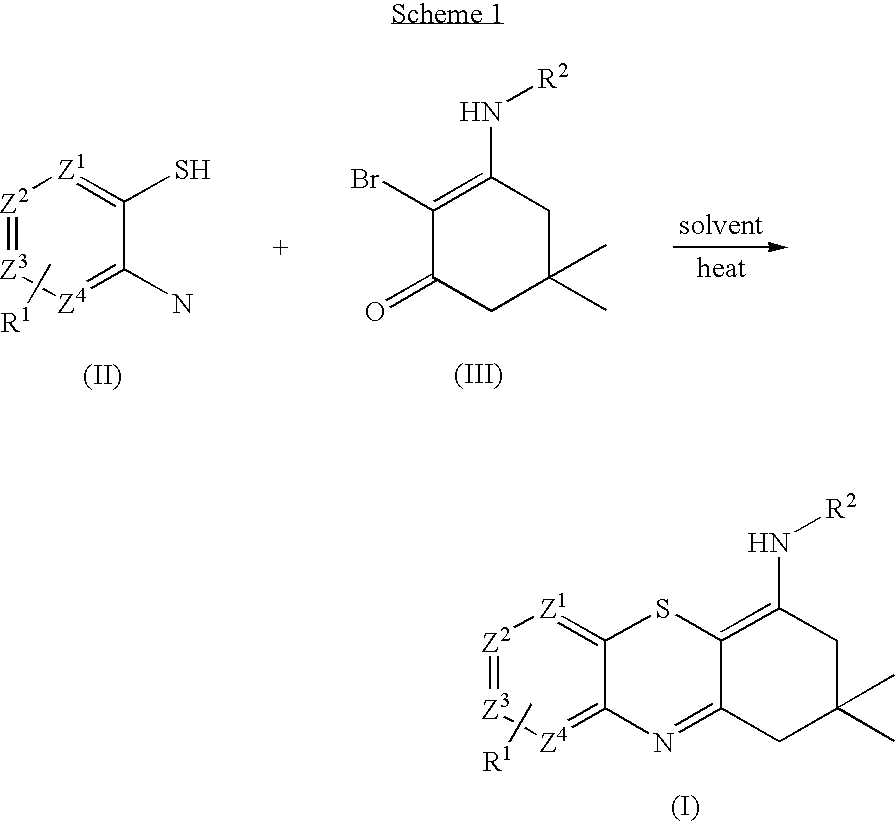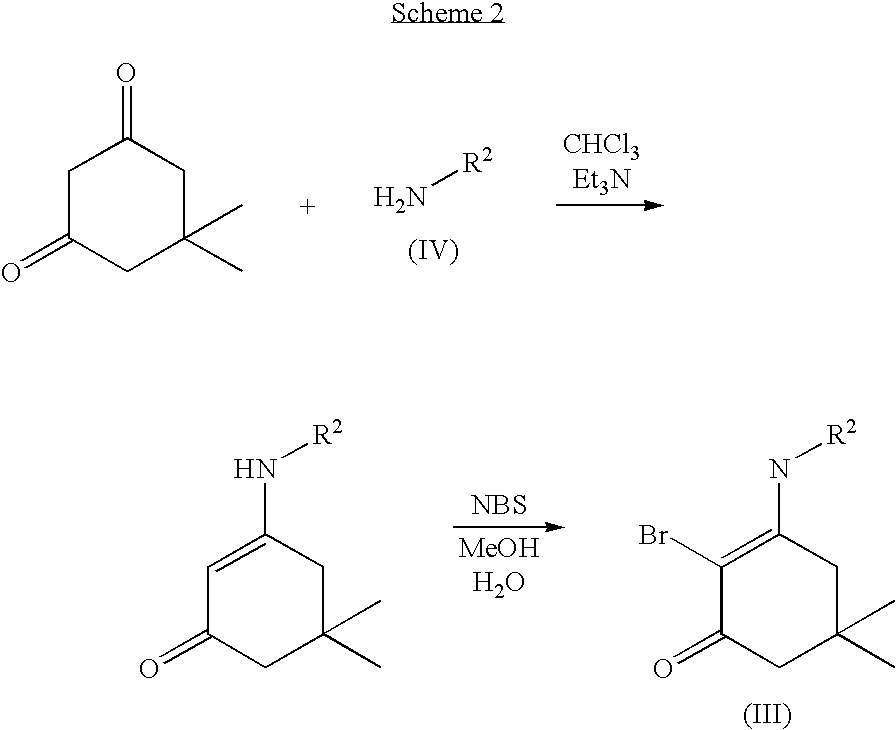Chimeric gaba receptor
a gaba receptor and chimeric technology, applied in the direction of neuromediator receptors, drug compositions, peptides, etc., can solve the problems of gabasub>b /sub>agonist binding assay, hts cycle time is reduced, and biochemical resources such as recombinant proteins are currently unavailabl
- Summary
- Abstract
- Description
- Claims
- Application Information
AI Technical Summary
Benefits of technology
Problems solved by technology
Method used
Image
Examples
example a.1
[0117] Preparation of
[0118] 4Aminobutanoic acid 1,1-dimethylethyl ester [50479-22-61 (14 g, 0.087 mol) and 5,5-dimethyl-1,3-cyclohexanedione [126-81-8] (12.26 g, 0.087 mol) were dissolved in trichloromethane (250 ml) and N,N-diethylethanamine (0.5 ml) was added. The reaction mixture was stirred for 3 days and subsequently washed with three portions of 250 ml of water. The organic layer was dried on MgSO4 and concentrated under reduced pressure. The residue was recrystallised in DIPE / CH3CN to give 18.6 g (76%) of intermediate 1.
[0119] This product was taken up in methanol (250 ml) and water (100 ml). 1-Bromo-2,5-pyrrolidinedione (1 1.8 g, 0.066 mol) was added portionwise over a 30 minutes period. After stirring for an additional hour, 500 ml water was added The mixture was extracted with three portions of dichloromethane. The combined organic layers were dried on MgSO4 and concenterated under reduced pressure to yield 22 g (92%) of intermediate 2.
[0120] In a similar way was also ...
example a.2
[0121] Preparation of
[0122] A mixture of 5,6-diamino-4(1H)-pyrimidinethione [2846-89-1](0.0027 mol) and intermediate 2 (0.0027 mol) in ethanol (q.s.) was stirred for 2 hours at 85° C. The reaction mixture was filtered and the solvent was evaporated. The residue was purified by high-performance liquid chromatography. The product fractions were collected and the solvent (CH3CN) was evaporated. The aqueous layer was extracted with EtOAc. The organic layer was separated, dried (MgSO4), filtered and the solvent was evaporated, yielding 0.400 g (30%) of intermediate 4.
example a.3
[0123] Preparation of intermediate
[0124] A mixture of 2-arninobenzcncthiol [137-07-5] (0.004 mol) and intermediate 2 (0.004 mol) in 1-methyl-2-pyrrolidinone [872-504] (15 ml) was stirred for 1 hour at 140° C. The reaction mixture was cooled and the layers were separated with EtOAc / H2O(NH3). The organic layer was dried (MgSO4), filtered and the solvent was evaporated. The residue was purified by high-performance liquid chrornatography. The product fractions were collected and the solvent (CH3CN) was evaporated. The aqueous layer was extracted with EtOAc and then the organic layer was dried (MgSO4), filtered off and the solvent was evaporated, yielding 0.6 g (40%) of intermediate 5.
B. Prenaration of the Compounds
PUM
| Property | Measurement | Unit |
|---|---|---|
| pH | aaaaa | aaaaa |
| pH | aaaaa | aaaaa |
| affinity | aaaaa | aaaaa |
Abstract
Description
Claims
Application Information
 Login to View More
Login to View More - R&D
- Intellectual Property
- Life Sciences
- Materials
- Tech Scout
- Unparalleled Data Quality
- Higher Quality Content
- 60% Fewer Hallucinations
Browse by: Latest US Patents, China's latest patents, Technical Efficacy Thesaurus, Application Domain, Technology Topic, Popular Technical Reports.
© 2025 PatSnap. All rights reserved.Legal|Privacy policy|Modern Slavery Act Transparency Statement|Sitemap|About US| Contact US: help@patsnap.com



